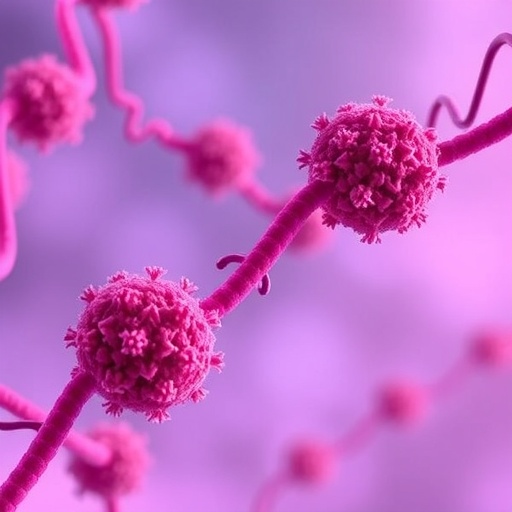(WASHINGTON – June 21, 2018) The American Society of Hematology (ASH) will collaborate with the International Society on Thrombosis and Haemostasis (ISTH), National Hemophilia Foundation (NHF), World Federation of Hemophilia (WFH), and the University of Kansas Medical Center to develop clinical practice guidelines on the diagnosis and management of von Willebrand Disease (VWD).
VWD is the most common bleeding disorder, affecting approximately 1 percent of the world's population. This inherited condition results in the decreased production, absence, or abnormal function of the clotting protein von Willebrand factor. VWD can cause unusual bleeding from small wounds or minor procedures, frequent nosebleeds, bruising, bleeding in joints, and heavy menstrual periods. Symptoms may vary from patient to patient or in a single patient over the course of his or her life. Primary care providers, pediatricians, obstetricians, and gynecologists who observe unusual bleeding often refer these patients to a hematologist for further testing and management. Many patients with mild symptoms do not receive a diagnosis right away and live for many years with untreated bleeding.
"The complex clinical presentation of VWD is a challenge for hematologists and referring physicians. Many patients remain undiagnosed until they experience a severe bleeding episode that could otherwise have been prevented," said ASH President Alexis A. Thompson, MD, MPH, of Ann & Robert H. Lurie Children's Hospital of Chicago. "These guidelines will provide clinicians and patients with clear recommendations for the timely diagnosis of VWD and appropriate management of symptoms. ASH is pleased to collaborate with ISTH, NHF, and WFH to convene diverse expert panels and expand the reach of the guidelines across the globe."
The goal of this effort is to create and maintain state-of-the-art guidelines on VWD. Two expert panels will produce recommendations for diagnosis and management. The panels are made up of more than 20 individuals, including U.S.-based and international hematologists, patients with VWD, and scientists with expertise in evidence synthesis and appraisal and guideline development methodology.
Panel members will identify and prioritize guideline questions based on the frequency with which a question arises in clinical practice, the degree to which there is variation in clinical practice, the extent to which the question has already been addressed by high-quality guidelines, and implications for resource utilization. In formulating questions, the panel will also place high importance on areas in which the development of guidelines could improve care and health outcomes important to patients and their caregivers.
Once the question formulation step is complete, KU Medical Center will conduct a systematic review of available evidence. Researchers with specialized training will identify, summarize, and grade the strength of the evidence. The panels will then use the evidence to develop recommendations for clinical practice. A public comment period will follow, with publication of the guidelines anticipated in 2020. Tools and educational resources will be released to help hematologists and other health care providers implement the recommendations.
The majority of individuals participating in the guideline development have no direct financial interests in companies with products that will potentially be affected by the guidelines. Furthermore, development of these guidelines is wholly funded by the sponsoring organizations.
This is the first time that ASH, ISTH, NHF, and WFH have collaborated on clinical practice guideline development and dissemination.
"The ISTH is proud to partner with ASH, NHF, WFH and KU Medical Center to develop important guidelines for the treatment of VWD as we address this global problem of diagnosis," said Ingrid Pabinger, ISTH Chairman of Council. "The tools and resources that will be developed through this partnership will greatly help the hematology community and all related specialists and primary care physicians to improve patients' level of care and health outcomes."
"This collaboration has the potential to be very impactful for our community," added Val Bias, CEO of NHF. "This collective effort will bring much needed information to medical professionals and play an important role in improving outcomes that are vital to the health of our families. The enthusiasm from so many stakeholders to becoming part of the guideline project speaks volumes to the potential of this initiative."
"Health care professionals and our patient community have long identified a need for this kind of clinical guidance, and the WFH is very pleased to contribute to its creation," said WFH President Alain Weill. "The diagnosis and treatment of VWD is a priority in our community and these guidelines should prove a valuable tool to physicians and hematologists working to improve the quality of life for those living with VWD as well as to the many ongoing essential VWD outreach and advocacy initiatives."
The development of these guidelines is one part of a larger guideline development initiative by ASH that aims to develop evidence-based guidelines on a range of hematologic conditions.
###
About the American Society of Hematology
The American Society of Hematology (ASH) (http://www.hematology.org) is the world's largest professional society of hematologists dedicated to furthering the understanding, diagnosis, treatment, and prevention of disorders affecting the blood. For more than 50 years, the Society has led the development of hematology as a discipline by promoting research, patient care, education, training, and advocacy in hematology. ASH publishes Blood (http://www.bloodjournal.org), the most cited peer-reviewed publication in the field, which is available weekly in print and online. In 2016, ASH launched Blood Advances (http://www.bloodadvances.org), an online, peer-reviewed open-access journal.
About the International Society of Thrombosis and Haemostasis
Founded in 1969, the ISTH is the leading worldwide not-for-profit organization dedicated to advancing the understanding, prevention, diagnosis and treatment of thrombotic and bleeding disorders. ISTH is an international professional membership organization with more than 5,000 clinicians, researchers and educators working together to improve the lives of patients in more than 94 countries around the world. Among its highly regarded activities and initiatives are education and standardization programs, research activities, meetings and congresses, peer-reviewed publications, expert committees and World Thrombosis Day on 13 October. Visit ISTH online at http://www.isth.org.
About the National Hemophilia Foundation
NHF (the National Hemophilia Foundation) is a 501(c)(3) nonprofit organization dedicated to finding better treatments and cures for inheritable bleeding disorders and to preventing the complications of these disorders through education, advocacy and research. NHF's programs and initiatives are made possible through the generosity of individuals, corporations and foundations, as well as through a cooperative agreement with the Centers for Disease Control and Prevention (CDC). Additional information on hemophilia and NHF can be found at http://www.hemophilia.org.
About the World Federation of Hemophilia
For over 50 years, the World Federation of Hemophilia (WFH), an international not-for-profit organization, has worked to improve the lives of people with hemophilia and other inherited bleeding disorders. Established in 1963, it is a global network of patient organizations in 140 countries and has official recognition from the World Health Organization. Visit WFH online at http://www.wfh.org.
About the University of Kansas Medical Center
The University of Kansas Medical Center's mission is to educate exceptional health care professionals through a full range of undergraduate, graduate, professional, postdoctoral and continuing education programs in the schools of Medicine, Nursing and Health Professions. KU Medical Center also advances the health sciences through world-class research programs; provides compassionate and state-of-the-art patient care in an academic medical center environment; and works with communities in every Kansas county to improve the health of Kansans.
Media Contact
Amanda Szabo
[email protected]
202-552-4914
@Bloodjournal
http://www.hematology.org




